Contents
Former imperial villa Nijo-jo Castle
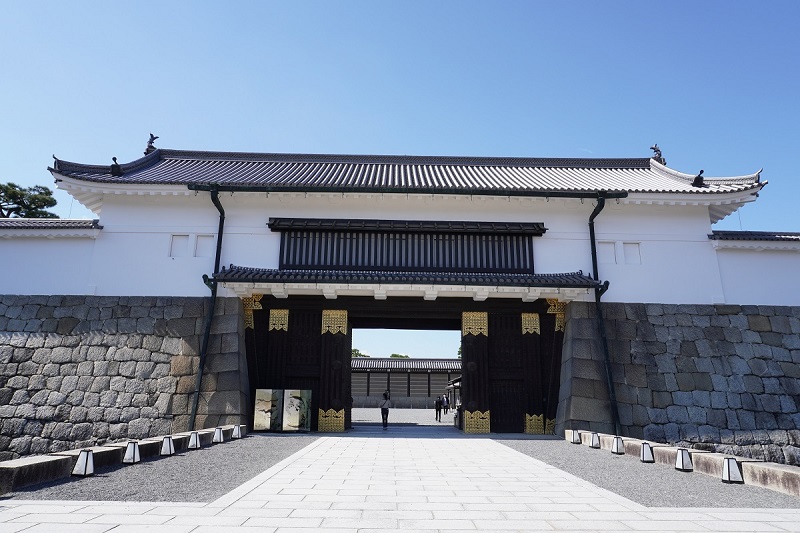
Nijo-jo Castle was built in 1603 by Ieyasu Tokugawa, the first shogun of the Edo Shogunate, as Kyoto Shugo (Military governor of Kyoto) and as the lodging facility when they visited the capital. At the same time as the completion of Nijo-jo Castle, it was the beginning of the Tokugawa era, which lasted for more than 260 years. In 1626, the existing Nijo-jo Castle was reformed for Gyoko (Emperor’s going out) of Emperor Gomizunoo. It became the luxuriously decorated castle. In 1867 (Keio 3rd year), Yoshinobu Tokugawa, the 15th shogun of the Edo Shogunate, summoned 40 senior vassals and declared “Taisei Hokan”, the restoration of imperial rule, in Nijo-jo Castle hall. As a result, the curtain of the Tokugawa Shogunate was lowered at Nijo-jo Castle.
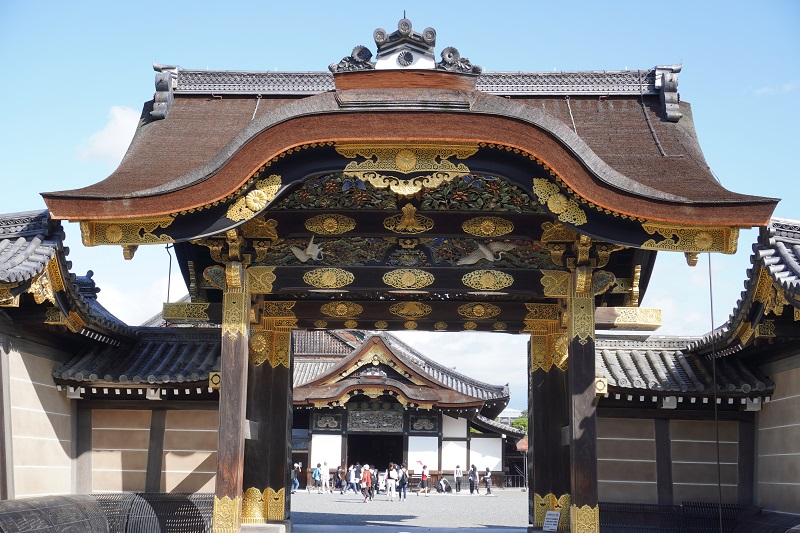
■What is Taisei Hokan?
The shogunate had taken over the administration from the emperor and reigned as the ruler of Japan. Since there was a movement to defeat the Shogunate by force around this time, Yoshinobu declared to return the administration to the imperial court for a peaceful solution. The new era started by declaration.
Gorgeous Kara-mon Gate

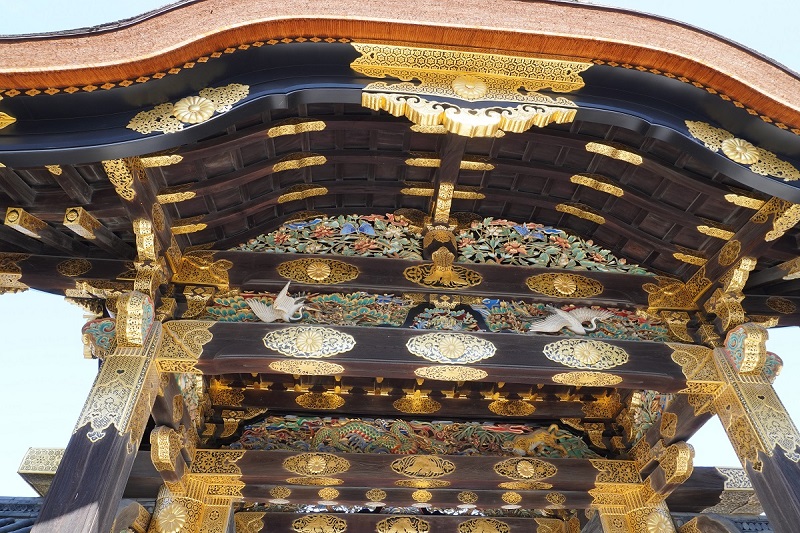
Kara-mon Gate was built in the year before the 1626 Gyoko (emperor royal visit). There are sculptures that symbolize longevity such as cranes, turtles and bamboo plums, and sculptures that are thought to be sacred beasts such as dragons and tigers. It is the gorgeous and high social status Kara-mon Gate. This is an important cultural property.
Ninomaru-goten Palace
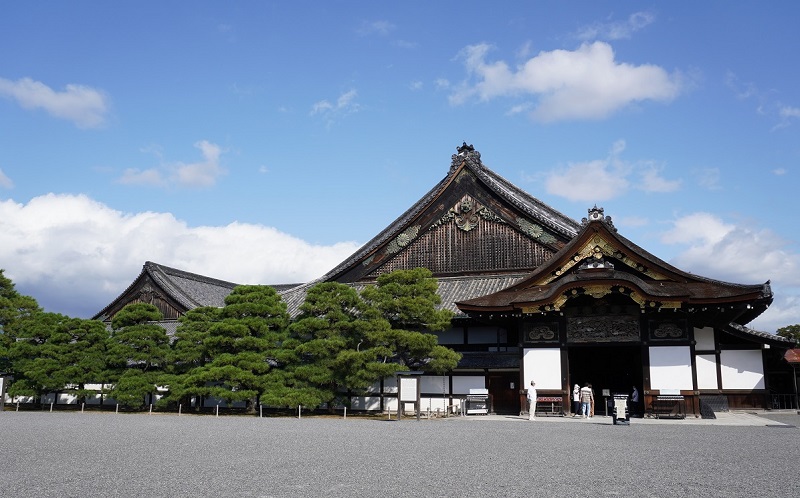
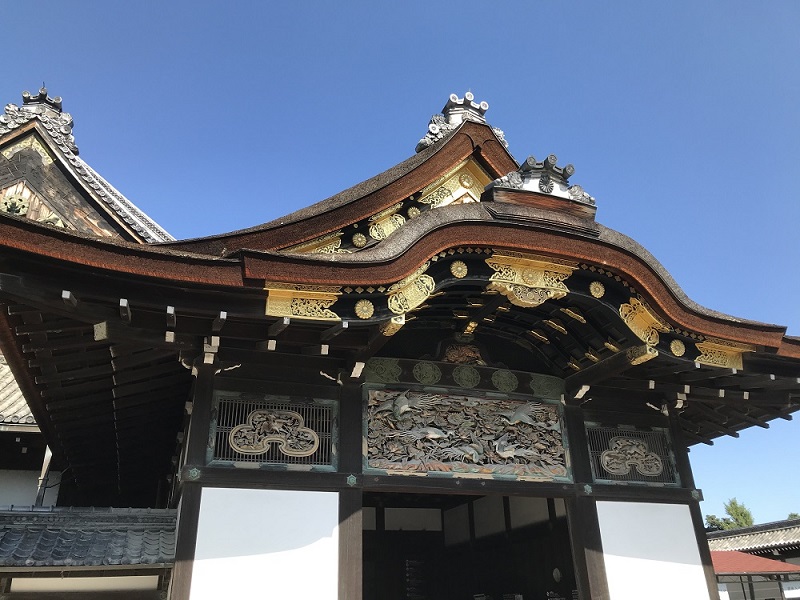
It is the represent architecture of Japanese Shoin-zukuri style in the Edo period, and it is the only palace that remains in the castle in Japan. It is designated as a national treasure. There are more than 3000 wall paintings that you can feel the prosperity of Tokugawa. Tigers with dynamism provided are drawn on the wall of the room where visitors first enter, you can feel the dignity of Tokugawa. Tigers are considered to be sacred beasts in China, and are said to protect their masters and threaten visitors. In the large hall (the third room), there are wonderfully carved transom windows with openwork. And you can see luxurious rooms decorated with gold hardware. Nijo-jo Castle, which became a historical stage, is the magnificent palace where you can still feel the majesty of the Tokugawa shogunate.
Ninomaru Garden
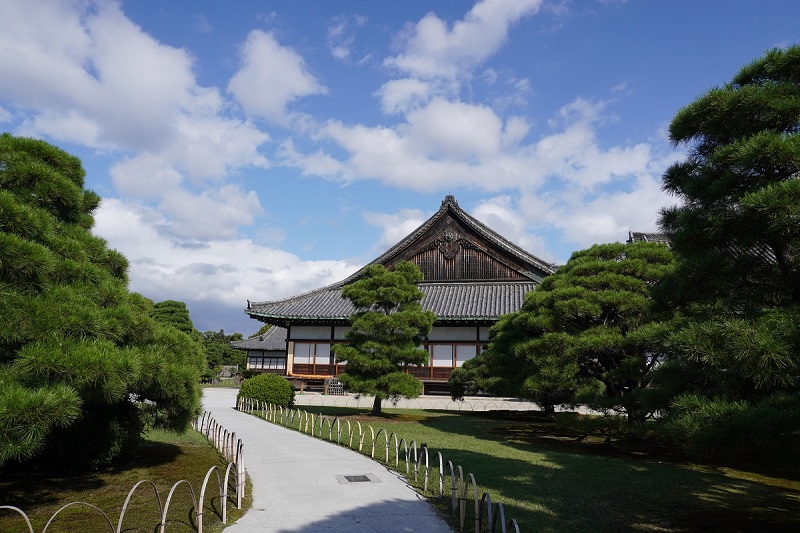
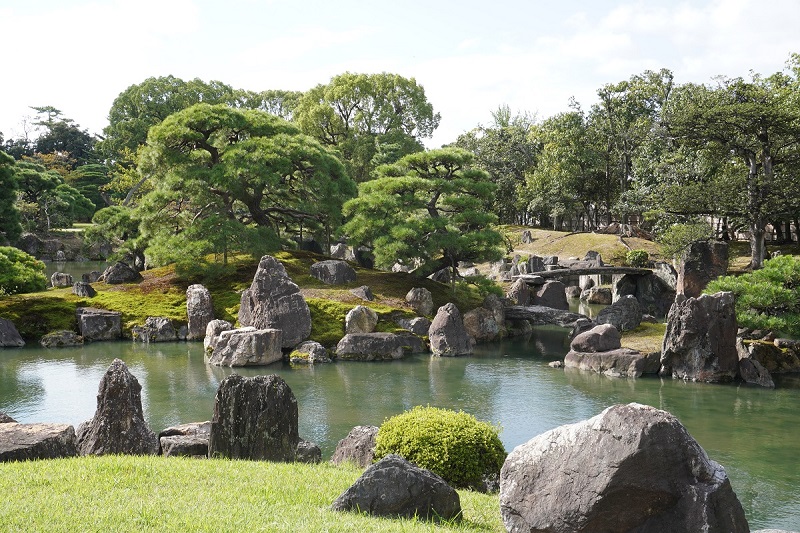
The garden was created when the castle was built in 1603 (Keicho 8). In 1626, it was renovated by Enshu Kobori, called Sakuji-bugyo which was in charge of repairing or constructing official buildings, for the Gyoko. This is the only castle where you can appreciate the Shoin-zukuri style garden with the palace. It is designed to be viewed from three different directions: the Ohiroma Hall, Kuro-shoin, and the Gyoko-goten Palace.
Hanging Bells
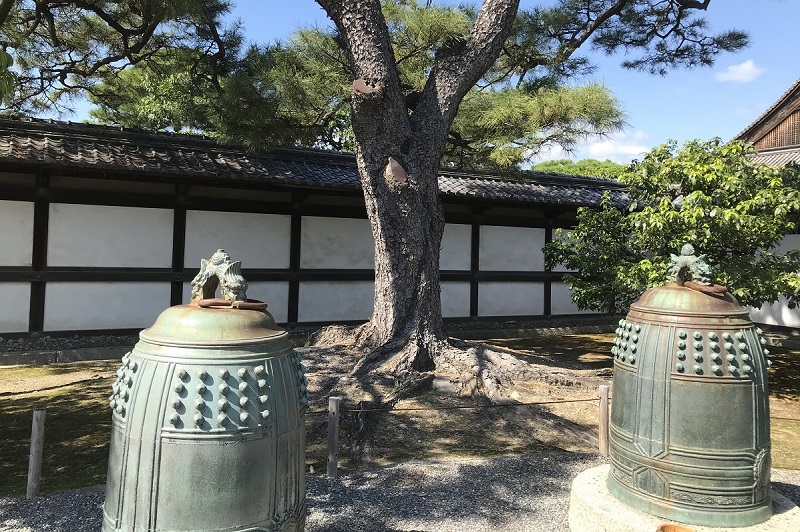
These bells were used to inform the surroundings of an emergency such as a fire. It was used in the Kyoto shoshidai, in charge of maintaining security of Kyoto, around Nijo-jo Castle. Since the shoshidai was abolished, it was moved to Nijo-jo castle.
The base of the keep tower
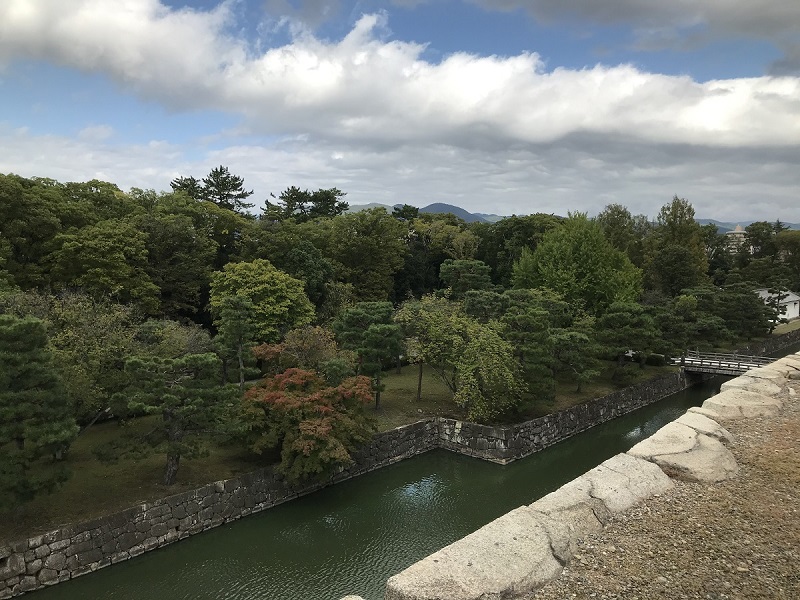
The castle tower at this location was a 5-story building with 1basement floor which was relocated from Fushimi Castle in 1626 (Kanei 3). It was burnt down by a lightning strike in 1750 (Kanen 3) and was never rebuilt after that. Emperor Gomizunoo went up to this castle tower during his visit in 1626, and is said that the only castle tower that the emperor climbed. Now you can climb the stone wall. From the 5th floor above the ground at that time, it would have been a wonderful view overlooking the beautiful city of Kyoto.
Honmaru-goten Palace and Gardens
Unfortunately, the Honmaru-goten Palace is currently undergoing conservation and renovation work and could not be seen. It is scheduled to be completed in 2022. I would like to visit again after the construction is completed.
The main palace, which was built in 1626, was destroyed by a large fire in 1788. After that, the building built by Yoshinobu, the 15th Shogun, was demolished in 1881. The main palace, which is currently undergoing restoration work, is the building built by the Katsura-no-miya family in Kyoto imperial Palace in 1847 was relocated to the present location in 1894. At that time, Nijo-jo Castle was used as a villa for the imperial family.
Honmaru Garden was created in 1896 (Meiji 29) under the direction of Emperor Meiji.
Japanese café : Waraku-an
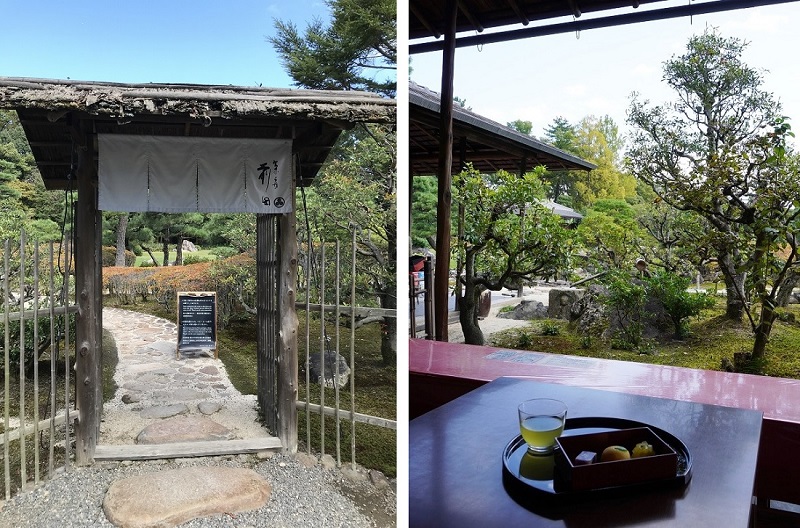
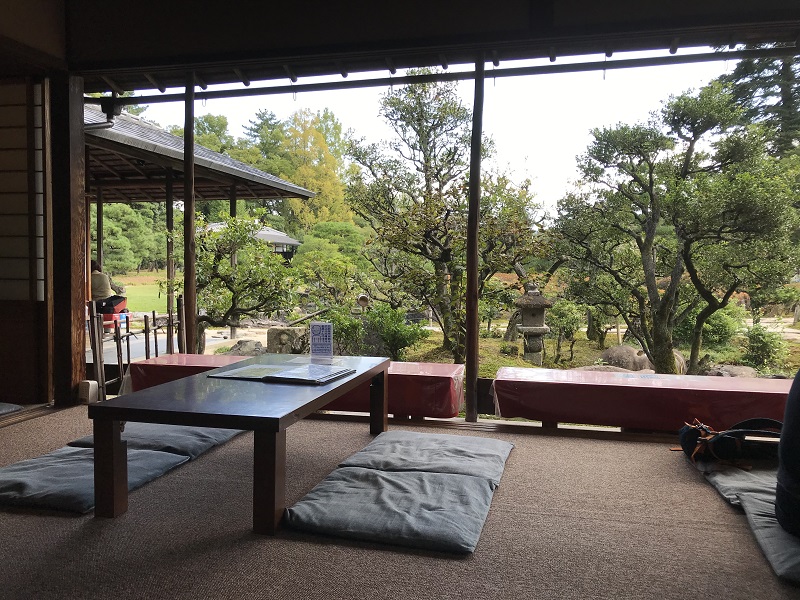
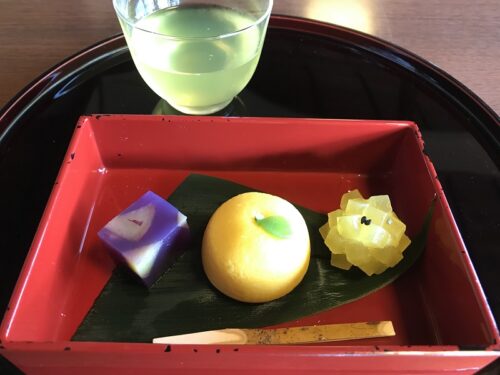
It is a Japanese café in the castle. You can spend tea time while watching the garden, called Seiryu-en Garden. Seiryu-en Garden is an eclectic garden between Japan and foreign. The eastern half is a Western-style garden, and the western half is a Japanese-style garden. You can enjoy Japanese sweets and tea.
Access
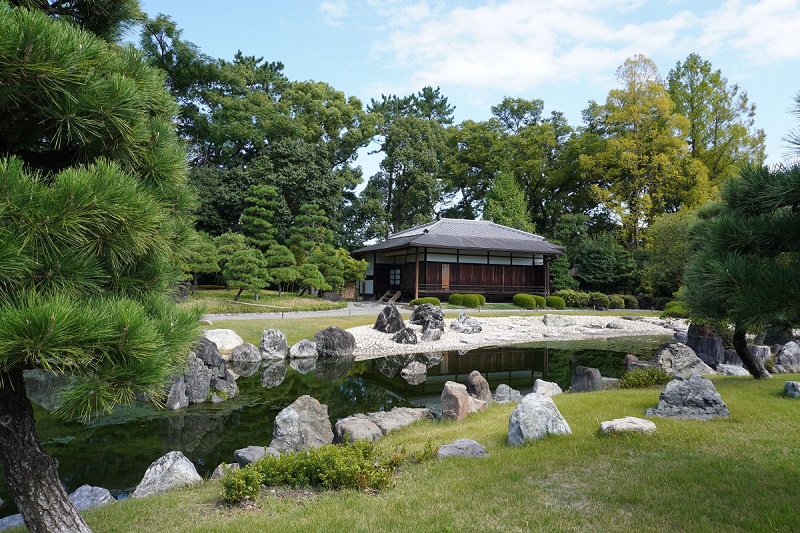
Immediately after getting off at “Nijojo-mae Station” on the subway.
Immediately after getting off at the city bus “Nijojo-mae” bus stop.
Click here for shops around Nijojo Castle.